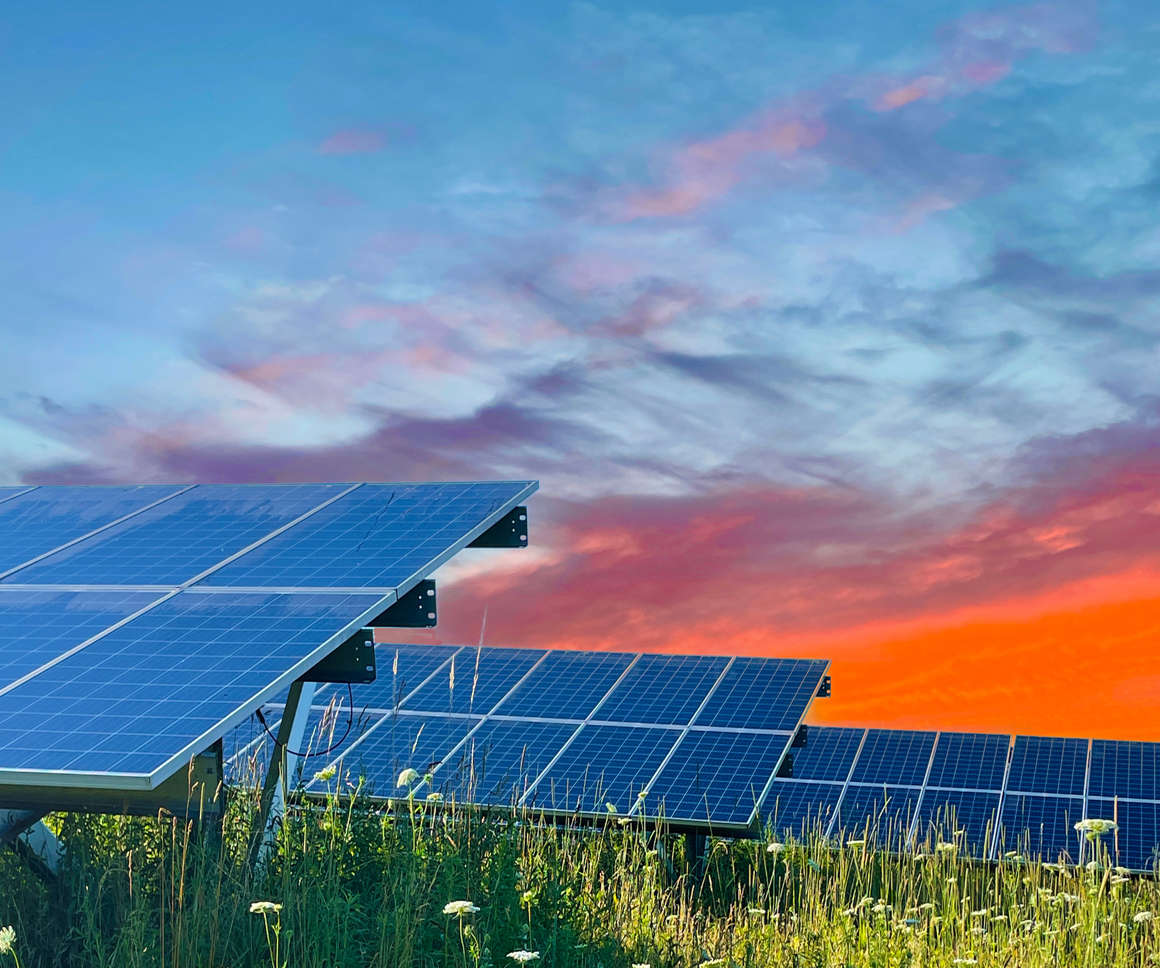8 trends in the evolving residential solar landscape
This content is AI generated, click here to find out more about Transpose™.
For terms of use click here.

Despite the current challenges faced by many solar businesses, some can still set themselves up for success.
We are likely to see (relatively) pragmatic revenue projections in the solar industry in this next 2-3 years. There will also be a greater shift towards customer-centric business models that can work in a post-subsidy market.
1. Investment opportunities and market consolidation
There will be heightened investment flows, initial public offerings (IPO), mergers and acquisitions (M&A), bankruptcies, and exits over the next 5 years. Particularly when large players leave the market, it leaves a gap that incumbent rivals and new entrants will vie for. For example, USA market leader Sunrun is currently in talks with many of (the recently bankrupt) SunPower’s dealers and have recruited some senior ex-employees. Even in a market downturn, if companies play their cards right and increase market share they can still grow YoY customer acquisition numbers.
2. The saturation of cheap Chinese imports and discounted project quotes
Attracted to the potential high revenues, manufacturers and installers alike ramped up solar supply capacity between 2022 – 2023. There was also a surge of market entry from more players. But against a backdrop of lower-than-anticipated demand, a large inventory of solar equipment has built up in Europe. In the first half of 2024, several market players applied aggressive price discounts to clear inventories and win projects. But this has largely stabilised by start of the second half of 2024.
3. Share prices of public-listed companies will fluctuate
Share prices fluctuate due to a variety of factors (eg market sentiment, economic environment, industry news, financial results, etc). While recent declines in major solar stocks might be of concern to investors (often rightly), long-term value investors will focus more on long-term trends and consider the company’s prospects more broadly. In the case of the solar sector, despite recent price declines, we consider that the long-term outlook remains promising, especially for those who can get through current challenges, and potentially gain more market share in the process.
4. Aggressive revenue growth forecasts vs. disciplined growth
Sometimes companies with high valuations in the stock market try to defend their share price by forecasting remarkable year-on-year growth. But the truth is very few businesses compound their earnings at triple or double-digit figures over a prolonged period.
Scale-ups that have resorted to a high amount of debt financing to turbocharge their growth further will need to repay debt plus interest whether they meet monthly sales targets or not.
Investors may be forgiving once or twice, but consistently performing below previous forecasts is something which is going to impact investor confidence sooner or later. For example, if you look at headlines when company earnings come out, it’s not usually framed as “Company A achieved x% growth”, but rather that “Company A misses earnings projections by X%”. The latter is a negative story, but the company could still have achieved growth. Hence, we are likely to see more disciplined growth and (relatively) pragmatic revenue projections in the solar industry in this next 2-3 years. Key is to meet investor expectations to maintain a more stable share price.
5. The risk of being highly-leveraged when interest rates rise
When a company has a high amount of debt compared to equity, its financing structure becomes more susceptible to downturns in the economy and the business cycle. When interest rates rose in 2022, the cost of debt became more expensive. This eats into profits and is a concern when there is limited margin to play with. Against a backdrop of lower demand, and hence revenue, many solar businesses had to lower their sales & marketing budgets – which in turn may have hurt customer acquisition further and the ability to meet future targets.
For Solar-as-a-Service businesses, the customer pays a recurring fee over a period of 5 – 20 years, instead of an upfront payment. A combination of high customer acquisition costs (in what is a competitive market), interest expenses and the relatively high costs of purchasing solar PV equipment from manufacturers means that many of these Solar-as-a-Service companies remain loss making, and it can take several years to see profitable operations.
6. Aggressive sales & marketing tactics
A recent TIME article exposed instances where solar customers in USA were being provided misleading information or subjected to unauthorised credit applications (as dealers and sales people got higher commissions if the customer signed up to a solar finance package). We do not have information on the scale of the mis-selling or unlawful practices, but the lesson is the same nonetheless. To leave solar deployment to profit-first motives is a win for nobody in the long-term. There are repercussions for the affected customers, the solar business, and the solar industry’s reputation.
7. Solar asset-backed securities (ABS)
We believe solar ABS have a role in spurring the residential solar market here in Europe – as it is doing already in the USA.
Solar ABS are securities that are collateralised, secured by pools of consumer receivables (consisting of solar loans, leases, or power purchase agreement (PPA) contracts). The basic premise involves packaging cash-flow generating assets together into one securitised product (rated as “investment grade” by rating agencies) and selling them on to institutional investors. It is an attractive consideration for investors with ESG investment mandates wanting to get exposure to a new class of debt instrument.
One of the key plus points of solar ABS is that the end-customers of these loans, leases, and PPAs tend to be eco-conscientious households with high credit scores. However, it is worth noting that ‘Early Adopters’ tend to be more affluent, and it is possible that the credit quality will reduce as the market enters more mainstream consumers.
Experience in the USA (which has a longer history of solar ABS) shows that customer default rate is around 1%. However, linked to point 6 above, this number may increase if a growing number of customers feel they were mis-sold to or are unsatisfied with their purchase. Interestingly, the rate of defaults of loans in one of Sunnova’s solar ABS portfolios was almost 5% by Q4 2023, according to an October 2023 report issued by the bond rating agency KBRA.
There is a clear need for quality data, rigorous analysis, and accurate forecasting. This will help investors better understand key risks such as customer default rates, contract renegotiation risks, volatility in future electricity prices, policy risks, technology performance risks and more. The more clarity on such risks, the more comfortable credit rating agencies and investors will be, which should facilitate a reduced cost of capital and promote higher transaction volumes.
8. Building business models that own the customer relationship and work in a post-subsidy market
The ‘traditional’ model of a solar PV provider simply installing solar systems for one-off payments is a simple business proposition but relatively low margin (as it stands). It does not capitalise on the range of opportunities that exist in the market. It was also a model that worked better in a period of subsidies (as heightened policy support stimulated demand). Which is why to future-proof and pursue higher margin models, several market players are incorporating one-stop-shop models (with multiple technologies offered and interoperability), subscriptions, financing services, home energy optimisation, dynamic tariffs, etc. (eg 1KOMMA5°, Enpal). The value proposition thus shifts from “buy a solar panel now while subsidies are good” to “invest in this home solution to reduce your energy bills and earn from energy system services. We will help you in each step of your energy transition – without comprising on quality customer service throughout”.
Speak to our market-leading solar & battery experts if you are interested in solar, battery and financial analysis.
This publication is intended as a subjective analysis piece for information and general thought-generation purposes only. It does not constitute advice (professional, financial or otherwise) and may not be relied upon by the reader for investment decisions. The information contained herein is based upon publicly available information and we accept no responsibility for its accuracy or completeness.
Unlock deeper insights on LCP Delta's subscription portal
Check out our portalSubscribe to our thinking
Get relevant insights, leading perspectives and event invitations delivered right to your inbox.
Get started to select your preferences.





